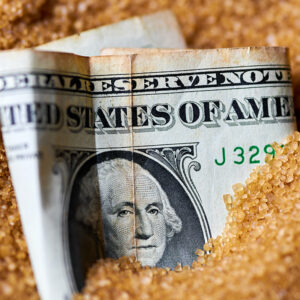June is National Candy Month, but the price of Snickers and Milky Ways bars remains stubbornly high thanks to the not-so-sweet U.S. sugar program.
As lawmakers again push for a new farm bill, they can eliminate this federal favoritism toward the sugar industry. But, if history is any guide, special interests will continue to feed at the trough.
The 2018 farm bill continued a troubling precedent, enabling Washington to hog nearly $1 trillion from taxpayers over a 10-year period to fund handouts to large agribusinesses. The New Deal-era sugar program has stubbornly persisted and kept sugar prices far higher than they needed to be, fueling inflation and contributing to the demise of the domestic candy industry. Congress must stop milking taxpayers and consumers and leave the sugar program out of the next farm bill.
For nearly 100 years, America’s sugar policy has inflicted high costs on consumers, confectioners and food producers. Though the federal government has taxed sugar imports since time immemorial, the infamous 1934 Sugar Act laid the groundwork for a sprawling import, allotment and quota scheme that froze markets and calcified high sugar prices.
Fast forward to today, and federally mandated minimum sugar prices continue to grip the American marketplace. Price support loans extended through the Department of Agriculture resulted in U.S. sugar prices being significantly higher than the worldwide average. Domestic raw sugar prices sit at around 42 cents per pound, compared to around 25 cents globally. Similarly, the price for wholesale refined cane sugar in the United States is more than double what foreign consumers pay. The government knows domestic price supports would fall apart if exposed to international competition. Onerous quotas and tariffs keep the system intact, banishing imported sugar from supermarket shelves.
These byzantine price controls force Americans to cut back on their purchases, to the detriment of thousands of small businesses. Baltimore-based Wockenfuss Candies owner and president Paul Wockenfuss expressed concerns that strict import restrictions create an “unlevel playing field” that is “just hurting the smaller businesses.” And when businesses can’t sell their products due to dubious government programs, jobs are inevitably lost. According to a 2013 Iowa State University study, the U.S. sugar program costs up to 20,000 jobs annually, even considering employment in the “protected” domestic sugar industry.
Yet, advocates for the broken status quo warn of dire consequences of the U.S. opening its markets to cheap foreign competition. They’ve even adopted the reasonable position that the U.S. sugar program can go — so long as other countries ditch their sugar subsidization schemes first. This concept, known as “zero-for-zero,” is, in fact, an unattainable ideal that all but ensures sugar protectionism will remain a staple of U.S. policy.
Claims abound that the United States “unilaterally disarming” its sugar policy is only a sweet deal for foreign companies and the governments subsidizing them. The European Union proved these “zero-for-zero” proponents wrong in 2006 when it implemented a wide-ranging quota relaxation and target price reduction scheme. Sugar prices have fallen considerably since reform and, despite recent price increases, are still significantly lower than they were pre-reform. And, due to further farming-related liberalizations, European production relative to consumption is growing and will likely continue to grow.
America could have a similarly sweet experience by kiboshing its sugar program. Putting the program out to pasture may be a bitter pill for special interests to swallow, but it’s the right thing to do.

